The deceptive sun of the desert: you shoot at the target, but you fall into a mirage
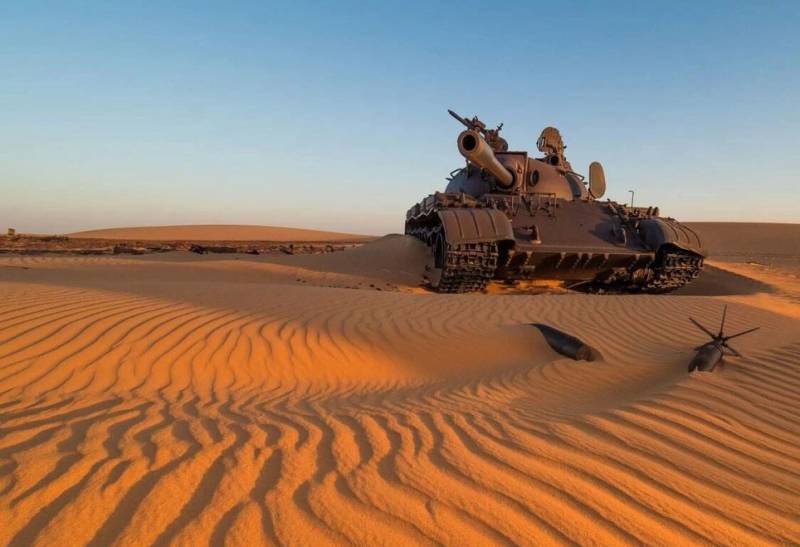
Speaking of hostilities involving tanks in desert regions with a hot climate, associations associated with the negative effects of high ambient temperatures immediately come to mind. Indeed, it is no secret to anyone that in the heat under the scorching sun, a tank without air conditioning turns into a bathhouse, which, supplemented by “steam” in the form of powder gases, becomes a real gas chamber for the crew.
The technique itself suffers - power plants, losing power, work at the limit of their capabilities and overheat. Cannon stabilizers become “loose” as a result of oil heating, and propellant charges with unenviable regularity lead to projectile flights, since heated gunpowder releases gases more intensively during combustion. Total and do not count.
But there is one problem that is often overlooked. It is connected with the refraction (refraction) of light - mirages, which significantly affect the accuracy of firing from tanks with the help of optical sights.
Play of light
Mirages, as a deceptive play of light and air, are different, but for the desert regions of Africa and Asia, the so-called lower mirages are most typical. It is thanks to them that phantom lakes with water or even entire rivers appear in the middle of the sands, and the dunes in the distance take on huge outlines. However, a similar phenomenon can also be observed in the city, when on a hot sunny day “puddles” appear on the hot asphalt of a highway or railway, reflecting the sky and inverted surrounding objects.
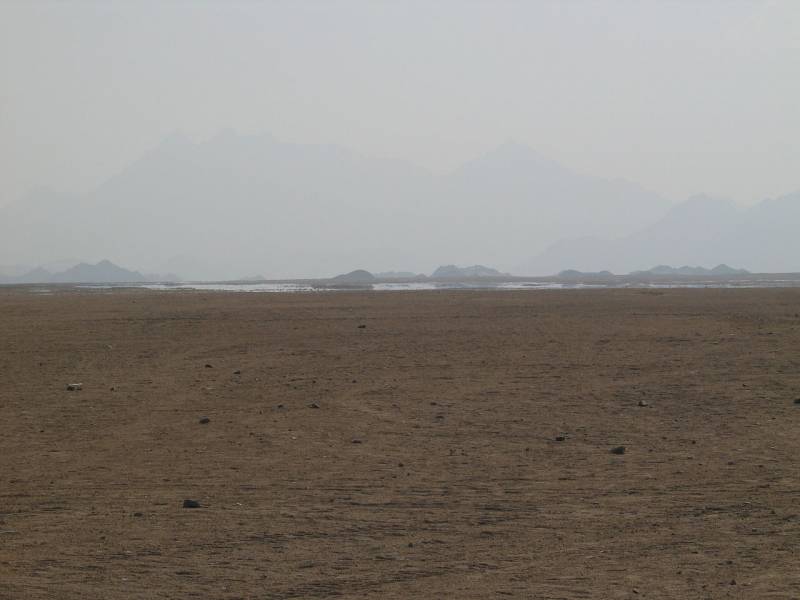
Inferior mirage in the Arabian Desert. Due to the refraction of light, water can be seen in the distance, which is actually a reflection of the sky
It arises due to the fact that the earth's surface, devoid of vegetation, heats up significantly in the sun and intensively gives off heat to the surface air layers, which lose their density due to the increase in temperature. But the layers of air located above remain colder and, accordingly, denser. As a result, due to the difference in the density of the media, the sun's rays are refracted and the same mirror effect occurs.
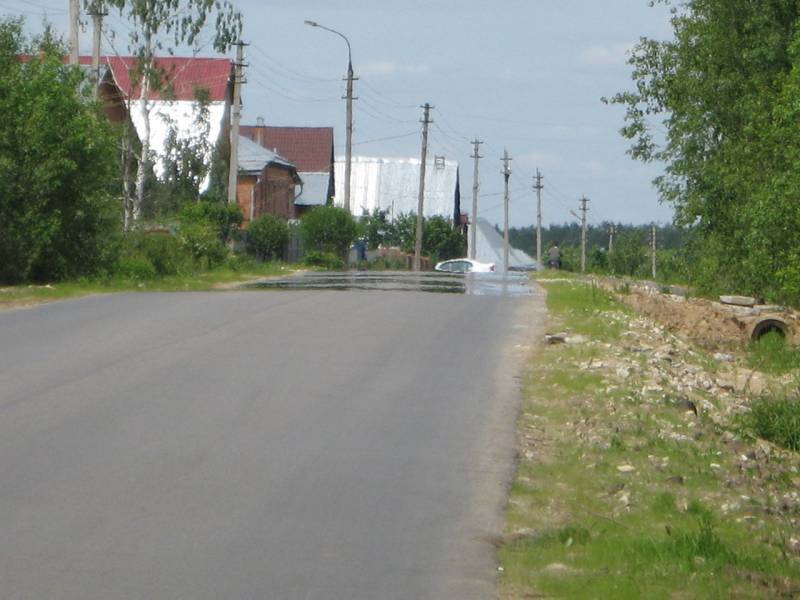
Inferior mirage on a hot asphalt road in the form of a "puddle"
But lower mirages play a cruel joke not only with travelers who get lost in the endless sands and try in vain to reach the ghostly reservoir, which is moving away more and more with every kilometer. They also annoy tankers, since at long distances it is almost impossible to assess the real contours and dimensions of a large target in the form of a tank and other armored vehicles.
In order to roughly understand how this happens, just look at the photo below. It can be seen that the resulting lower mirage on the highway forms a reflection of the truck, visually increasing its size. At a short distance, it is quite easy to see through this optical illusion, and if we are talking about a couple of kilometers, even with the help of a sight with a good magnification factor, the truck will seem almost one and a half to two times larger than it actually is.
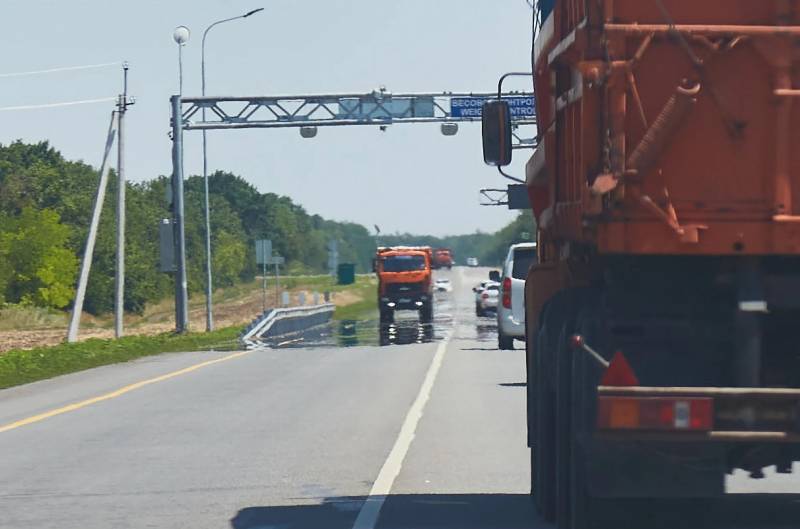
Considering that when firing at targets or real armored vehicles, tankers point aiming marks at the center of the visible target, this leads to frequent misses - the shells fly either higher or lower. In addition, the constant movement of air leads to image distortions, blurring of the boundaries of details, trembling and displacement of areas of the observed object, which also interferes with normal aiming.
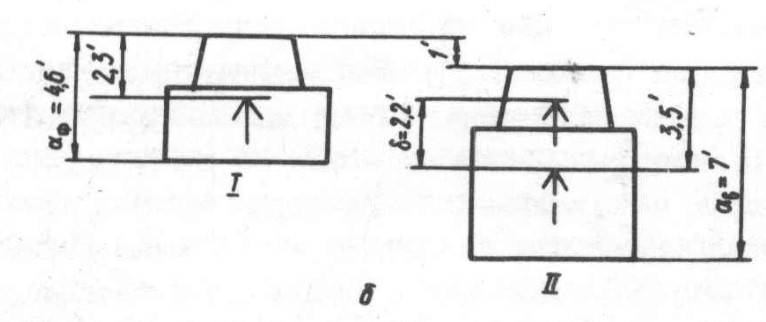
Visible contours of the target. Left - under normal conditions. Right - as a result of refraction at a distance of two kilometers
How much does it interfere?
Indeed, the results of daytime shootings of tank units in desert areas vary greatly depending on what time they are held. So, in the morning and evening hours, when the sun does not bake so much and the effect of light refraction is minimal, the hit rates on targets are higher than during the day.
In the USSR, this problem was studied back in the 80s, and they approached the process thoroughly and conducted a series of studies and calculations in the south of Kazakhstan and near the city of Ashgabat, in Turkmenistan. In the course of scientific research, it was possible not only to determine the probability of hitting targets of the "tank" type in the conditions of inferior mirages using simplified sighting systems and automated FCS, but also to give some recommendations on what to do when light and air start to get weird.
Now, actually, about the probability itself.
The automated fire control system included: a laser rangefinder sight with independent stabilization in both planes; weapon stabilizer; ballistic computer with automatic system (target angular velocity in azimuth, roll angle of the gun trunnion axis, wind speed) and manual input of environmental parameters - air temperature and powder charges, atmospheric pressure and bore wear.
The simplified sighting system included: a laser sight-rangefinder with independent stabilization of the field of view in the vertical and dependent stabilization in the horizontal plane; weapon stabilizer; a device for generating lateral lead to the angular velocity of the target line in azimuth, to the angle of roll of the axis of the trunnions of the gun and the speed of the side wind; manual adjustment mechanism.
With the help of them, the chance of hitting targets (target No. 12 - a tank) was estimated from a standstill and on the move at a speed of 30 km / h with feathered armor-piercing sub-caliber and cumulative projectiles at various distances.
The results are summarized in the table below.
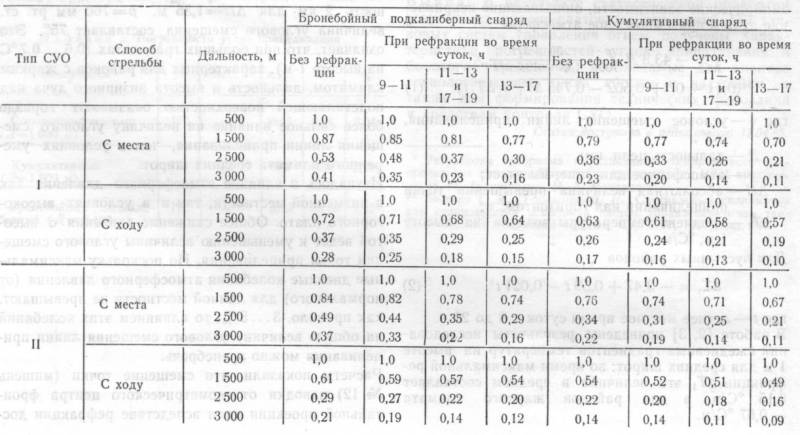
Probability of hitting a tank-type target. I - automated fire control system, II - simplified fire control system
As you can see, these data show that the error in aiming due to the effect of light refraction and, as a result, the distortion of the contours of the target in the direction of their increase, in the hottest time of the day from 13 to 17 hours, leads to a decrease in shooting accuracy from 7 to 32 percent depending on the type of projectile, range and the presence of an aiming system or a fire control system.
It is also interesting to look at one of the main indicators of accuracy, which is the range of actual shooting, at which, with a probability of 90%, at least one hit on the target with three shots is ensured.

Range of actual shooting. I - automated fire control system, II - simplified fire control system
The conclusion is similar to the previous one: the refraction of light during hot hours leads to a decrease in the actual firing range by 10–30%, depending on the type of projectile.
Conclusions
The influence of deceptive mirages on the accuracy of shooting with optical sights in desert conditions can, without any doubt, be considered significant. And the greater the distance, the more difficulties the gunner experiences when aiming at the target, even in the conditions of the training ground, when stationary targets act as enemy tanks.
In this regard, Soviet scientists developed recommendations for firing at a distance of up to 2 meters, which were reduced to routine operations, including measuring the range with a laser rangefinder, and then positioning the visible target between the strokes of the rangefinder scale with the base on the target.
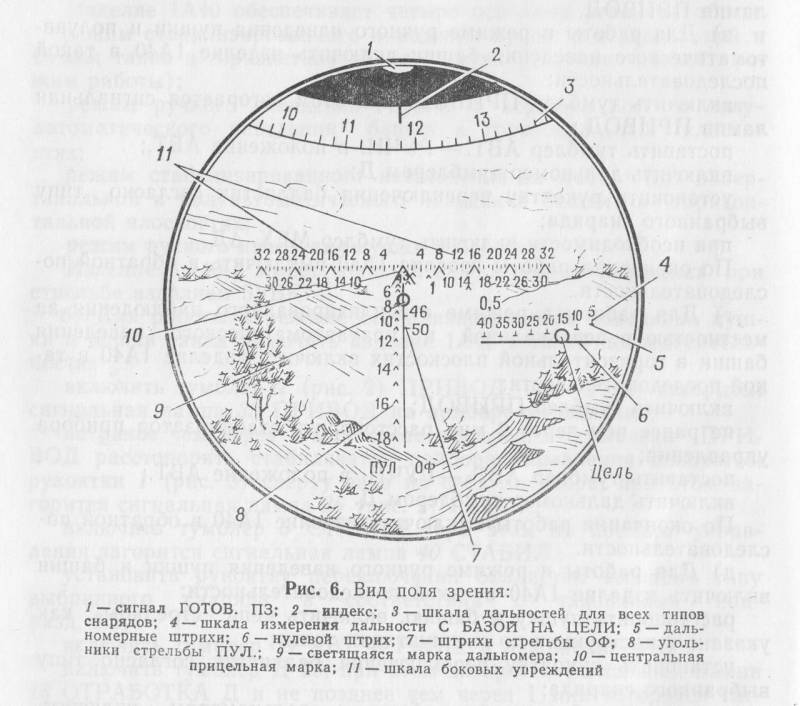
The location of the rangefinder scale with the base on the target. After measuring the range with a laser rangefinder, the gunner needs to position the visible target between the corresponding strokes to determine the degree of light refraction
Fits between them - there is no refraction. However, if the image went beyond the frame by 10–20% (visually), then aiming should have been carried out not at the center of the figure, but under the lower section of the tower. Accordingly, if the size was exceeded by 50%, it was necessary to aim already at the center of the tower so that the projectile did not go past.
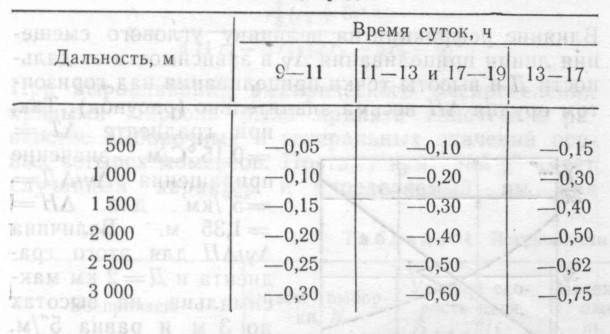
Table of pickup offset (mrad) for desert conditions in the Ashgabat region and in the South of Kazakhstan, depending on the range and time of day. It is hardly applicable in other areas, and due to climate change, it is no longer relevant in those places for which it was intended
But all this related more to "hothouse" training firing, when the loss of time to prepare a shot is not fraught with receiving a projectile in response. In combat, using these tips is not always possible, so the combination of optics, hot sand and long distances will still equal a lot of misses anyway.
Information sources:
Dmitriev M. I., Zatravin E. I., Mikheev A. S. et al. Influence of the surface layer of the atmosphere on the accuracy of aiming from BTT vehicles. - Issues of defense technology. Ser. XX, 1982, no. 105.
Zatravin E. I., Ivanov I. K., Lobanova M. V. et al. Influence of refraction on the accuracy of firing from tanks. - Herald of armored vehicles. 1986, no. 2.
Information